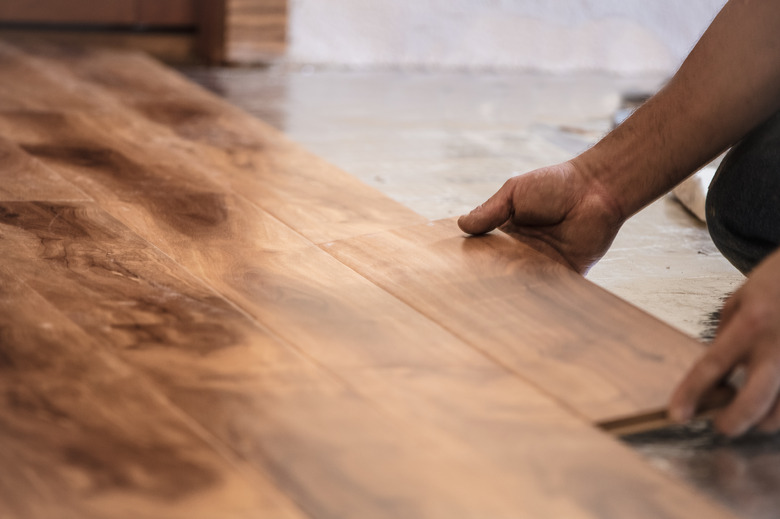How To Lay Laminate Flooring Over An Uneven Floor
We may receive a commission on purchases made from links.
Laying laminate over an uneven floor is doable, however it is strongly discouraged. While you may want to attack your project head on and just get it over with, it is important to make sure that the subfloor is in proper condition before moving forward. If you choose to ignore an uneven subfloor then the finished laminate flooring will diminish in quality rather quickly due to buckling or gaps in the flooring.
Assessing The Subfloor Quality
Assessing The Subfloor Quality
To assess the quality of the subfloor, you must first remove any existing flooring that is currently installed. To check if the floor is even you need to find a long level — a straight pipe would also work — and lay it along the floor. If the subfloor does not touch the level or the pipe equally along the whole length then there are areas in the floor that need work. Mark these problem areas, working your way across the floor to assess the entire floor.
Floors in older homes tend to be warped and uneven so these areas that need to be fixed before installing the laminate flooring. It is important to note that a laminate floor can be installed on a floor that is flat, but not necessarily level. The problems only arise when the floor is not straight and bumps or dips can be felt or seen in the subfloor. Laminate floors can be laid over small imperfections, but any grooves or buckling that exceed 3/16 of an inch in size need to be fixed.
Levelling a Wood Subfloor
Levelling a Wood Subfloor
If the subfloor is constructed of wood, such as plywood or particle board, look over the flooring to check for any areas that need to be secured using wood screws. If the subfloor was secured with nails that have become loose, which may happen when removing the flooring, replace these nails with screws as they will likely pose a problem in the future.
If there are any bumps that were marked, sand these high spots down until the floor is level once more. Once all the high spots have been taken care of, vacuum all the dust for a clean workspace.
To rectify any low spots in the subfloor you may need to use floor patches, floor levelling compound, or underlayment, depending on the severity of the grooves and dips that need fixing. Floor patches are for smaller fixes such as gaps or holes, however if it needs to be a bigger overall fix then the best option is to use a levelling compound.
Levelling compounds can come in a premixed product or a dry powder to then be mixed with water. Pour the liquid substance over the subfloor and use a trowel to spread it around and smooth the surface. Levelling compounds will work using gravity to be pulled in the deeper areas that need filling. Once the levelling compound has dried it still needs to be evaluated for high spots that may need to be sanded down.
Levelling a Concrete Subfloor
Levelling a Concrete Subfloor
Concrete subfloors are assessed and fixed the same as wood subfloors. If there are only high spots, level them out using an angle grinder that has a cup-wheel attachment for concrete. Wear protective eyewear as well as a respirator as it will cause lots of concrete dust which is dangerous when inhaled.
Any dips or low points in the floor can be fixed with floor levelling compound, the same as for the wood subfloor. Apply the mixture to the floor, smoothing as you go and fixing any bumps that may occur after it has dried. Make sure the levelling compound is dried level before laying the laminate flooring over the fixed subfloor.
